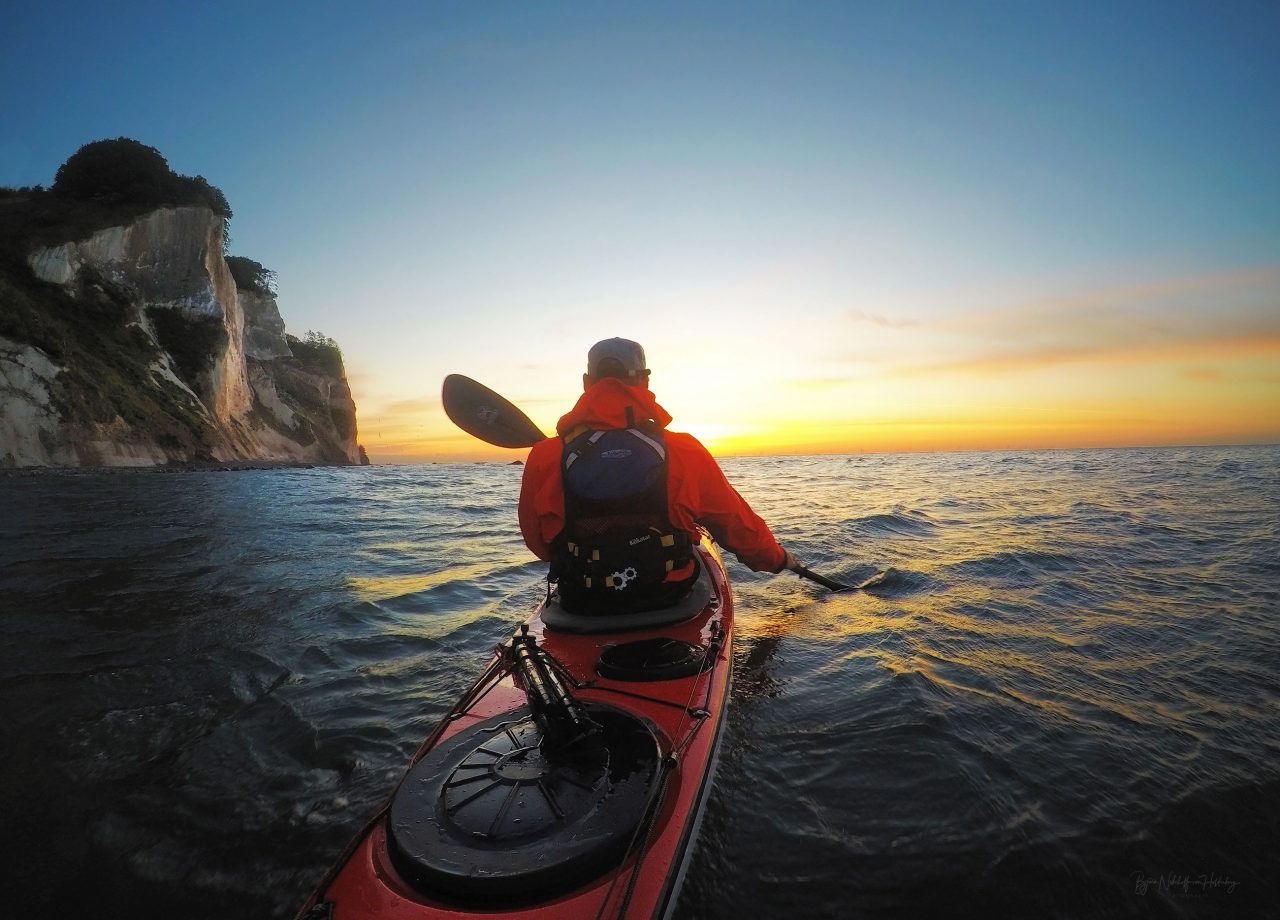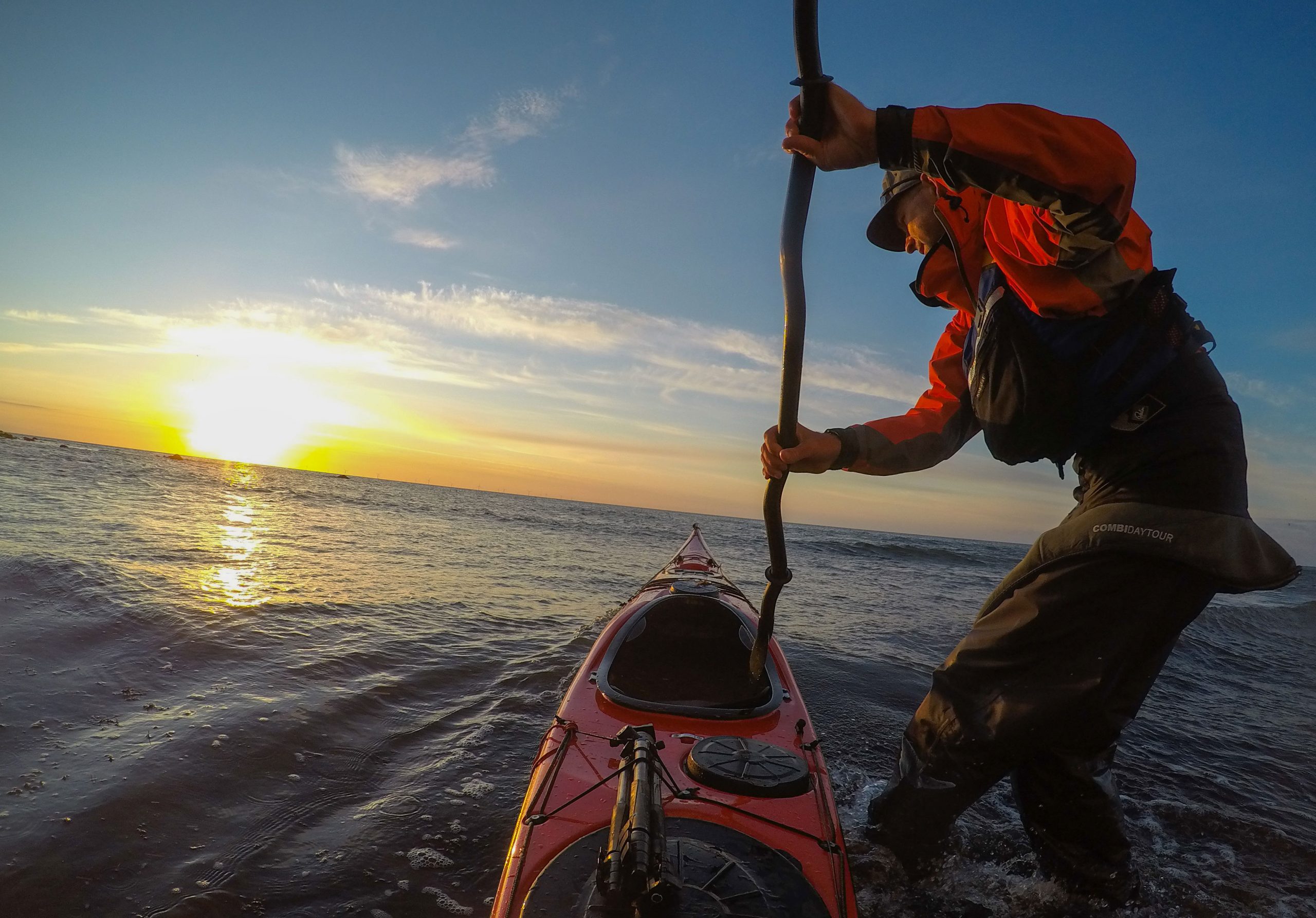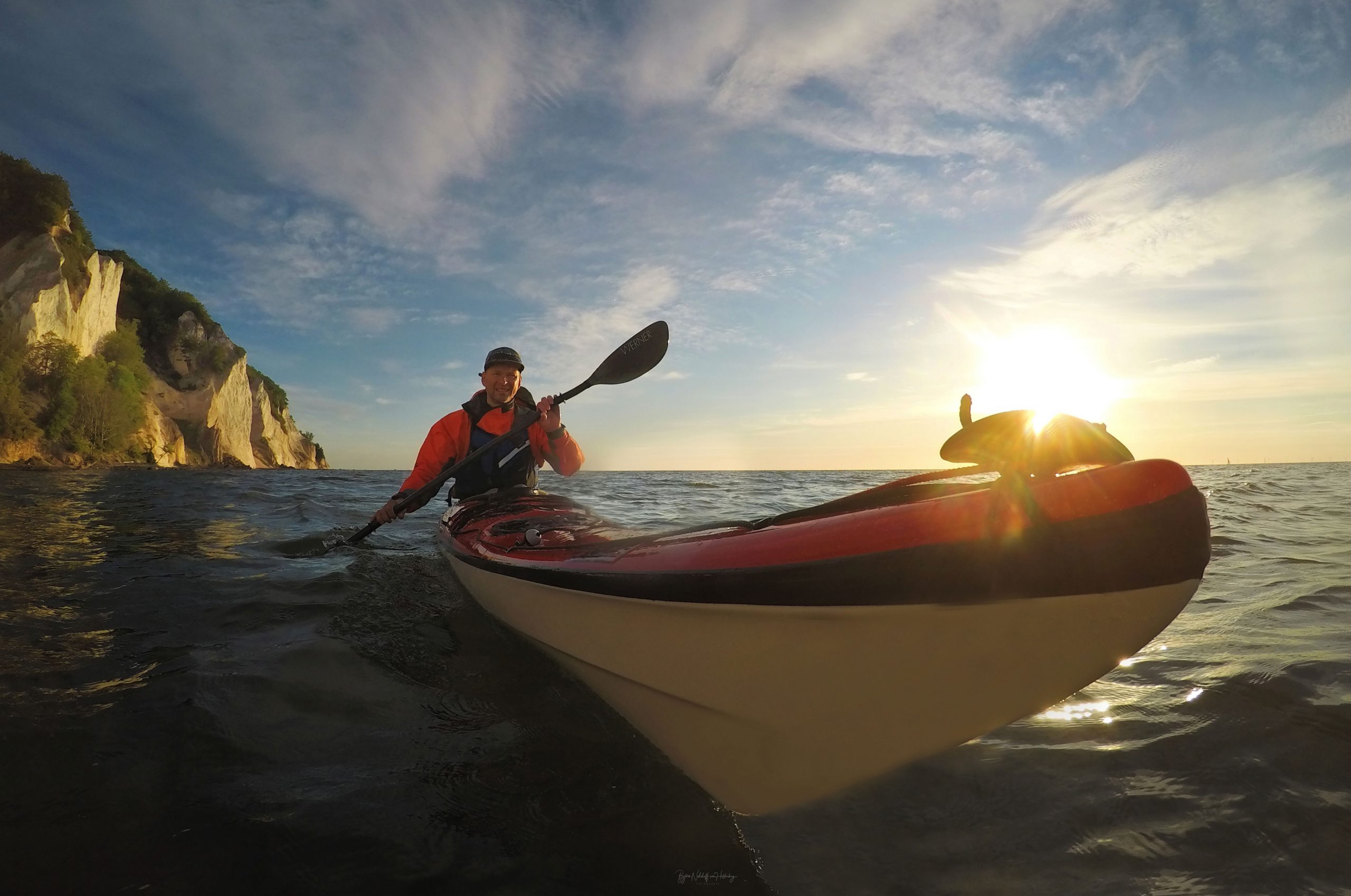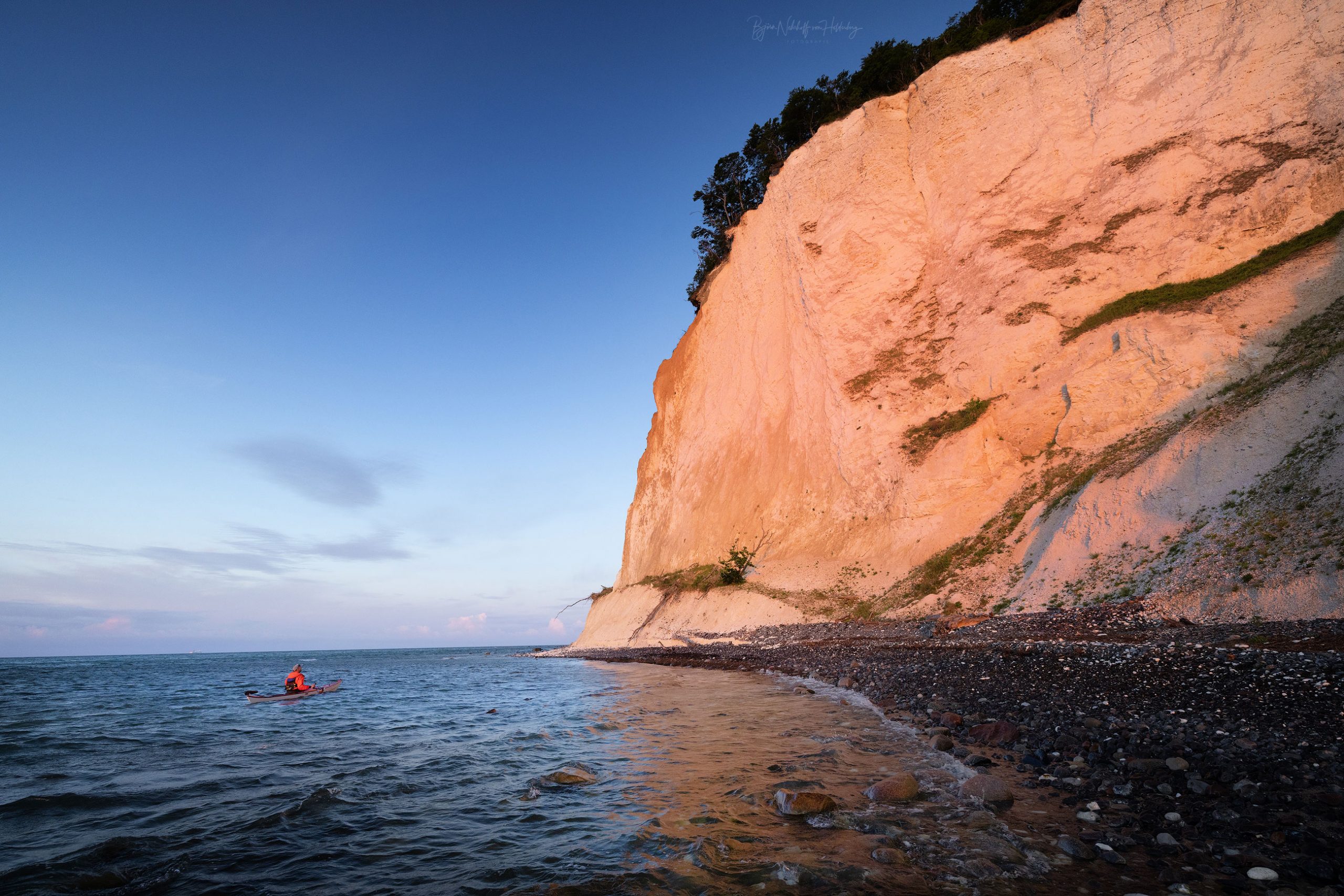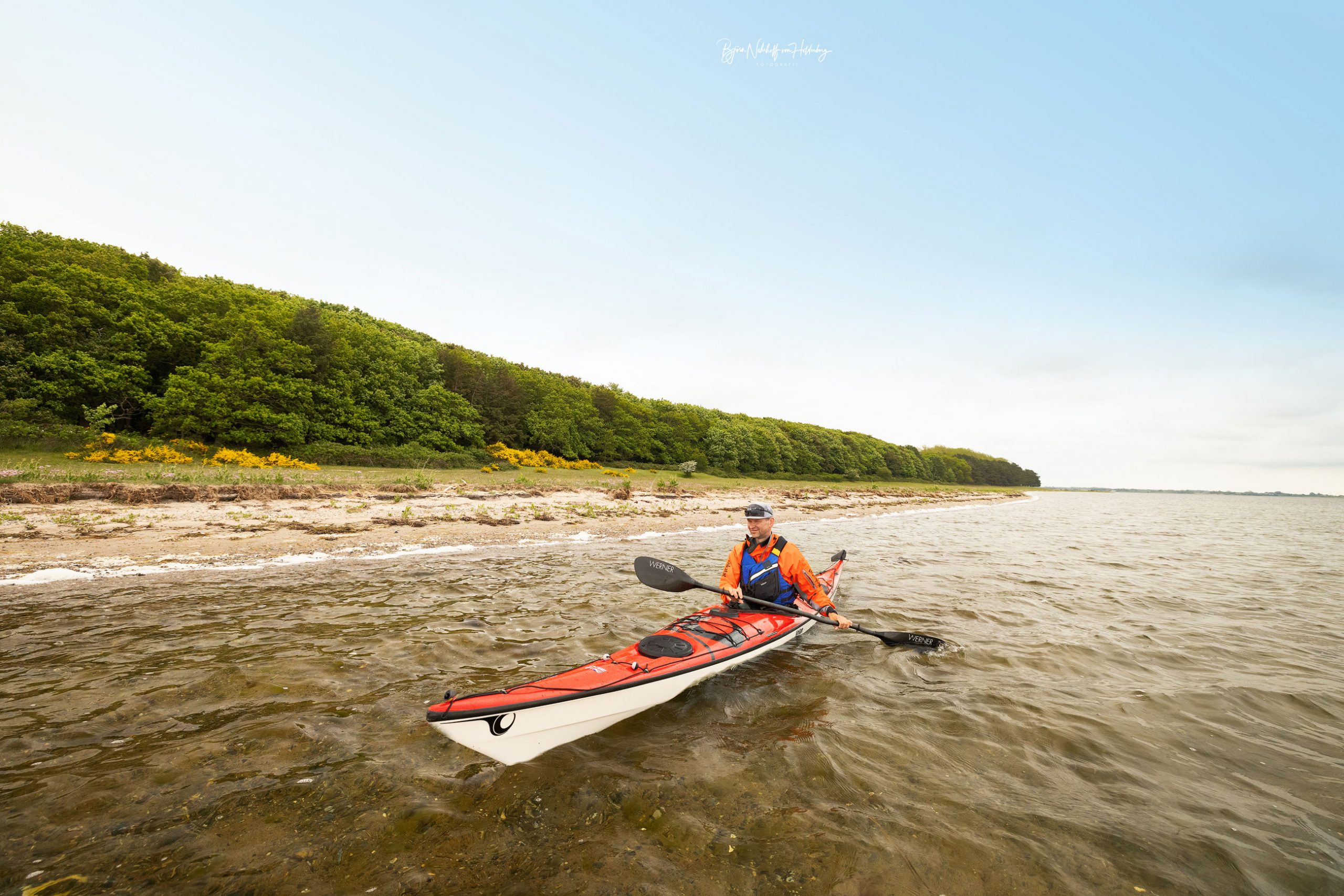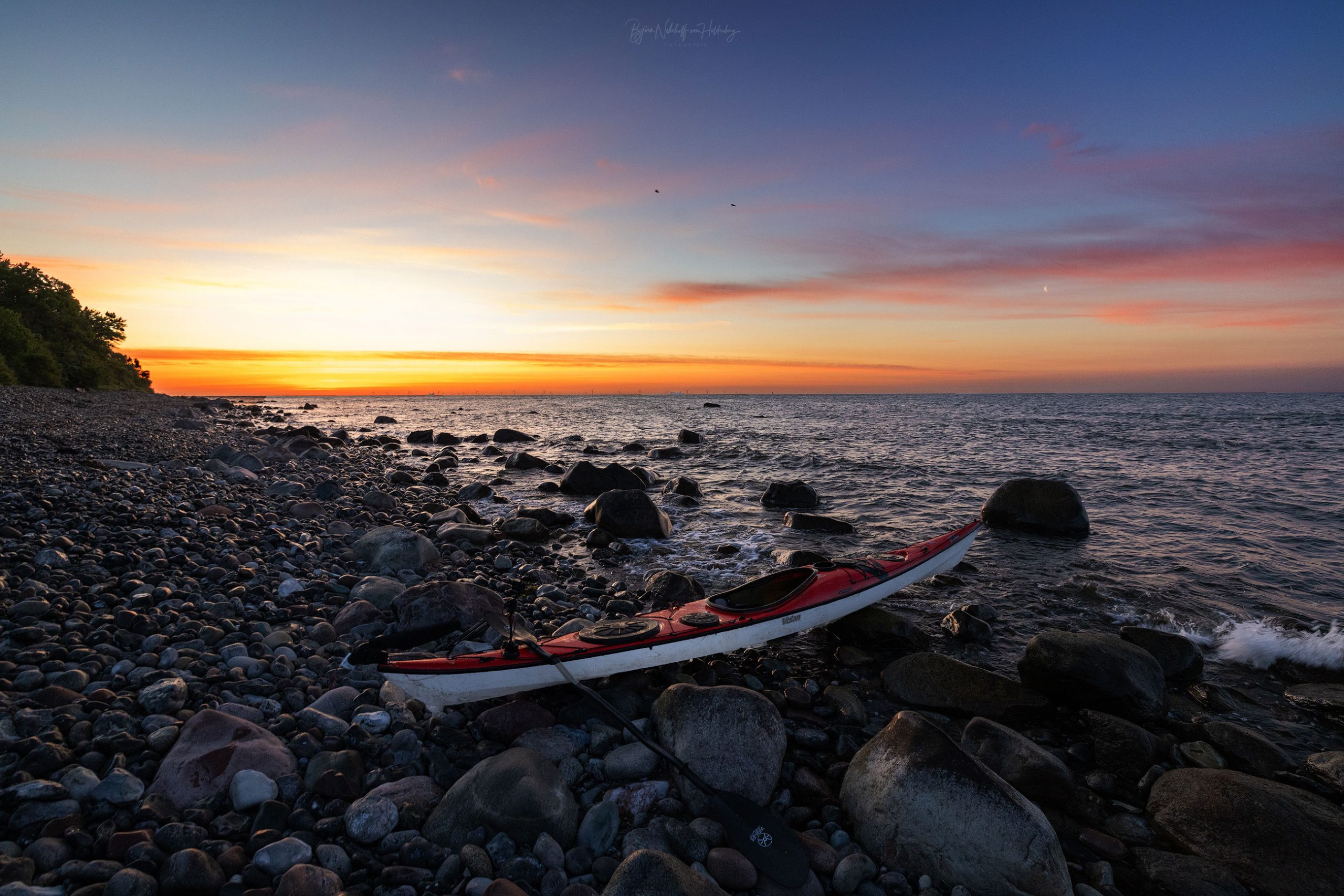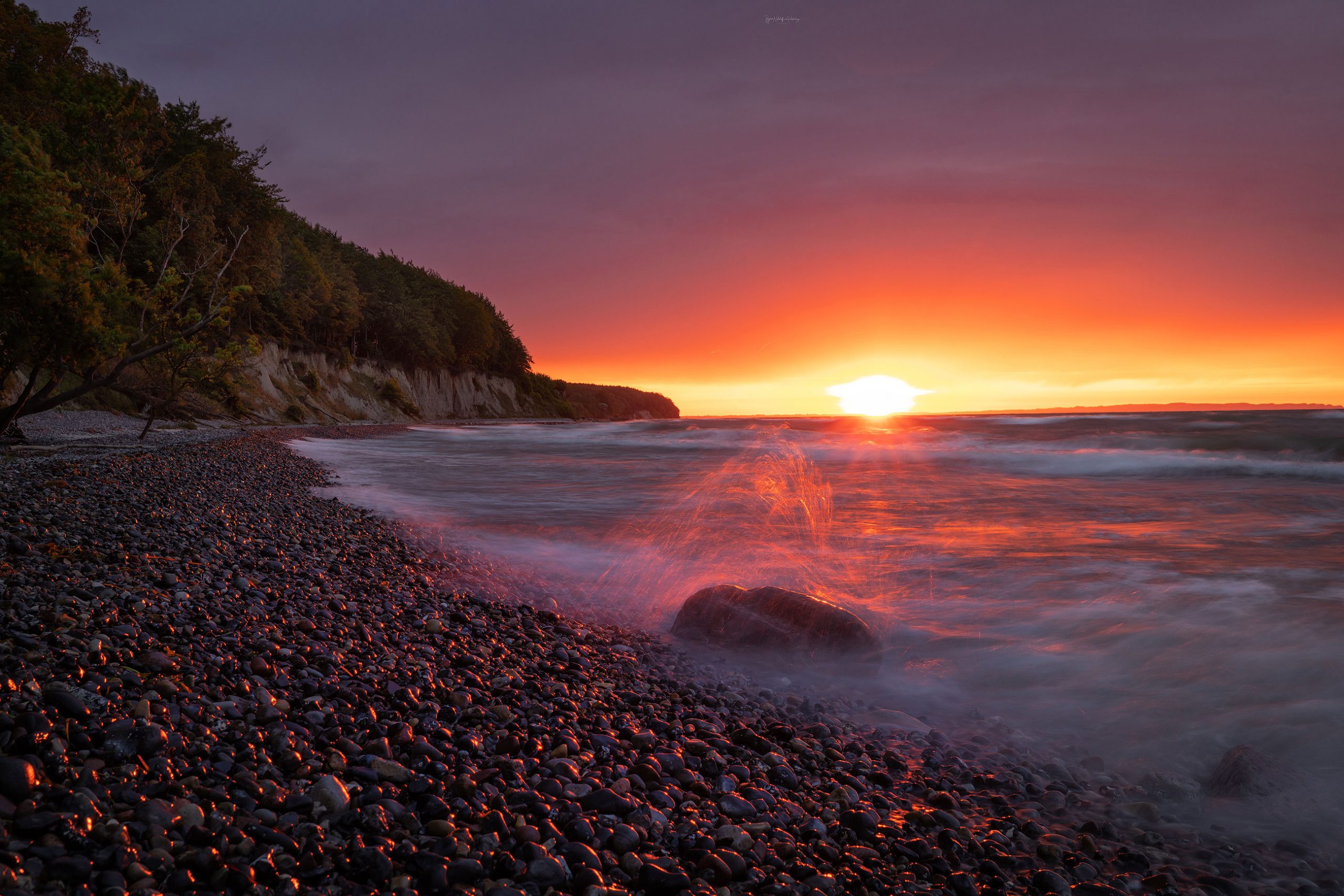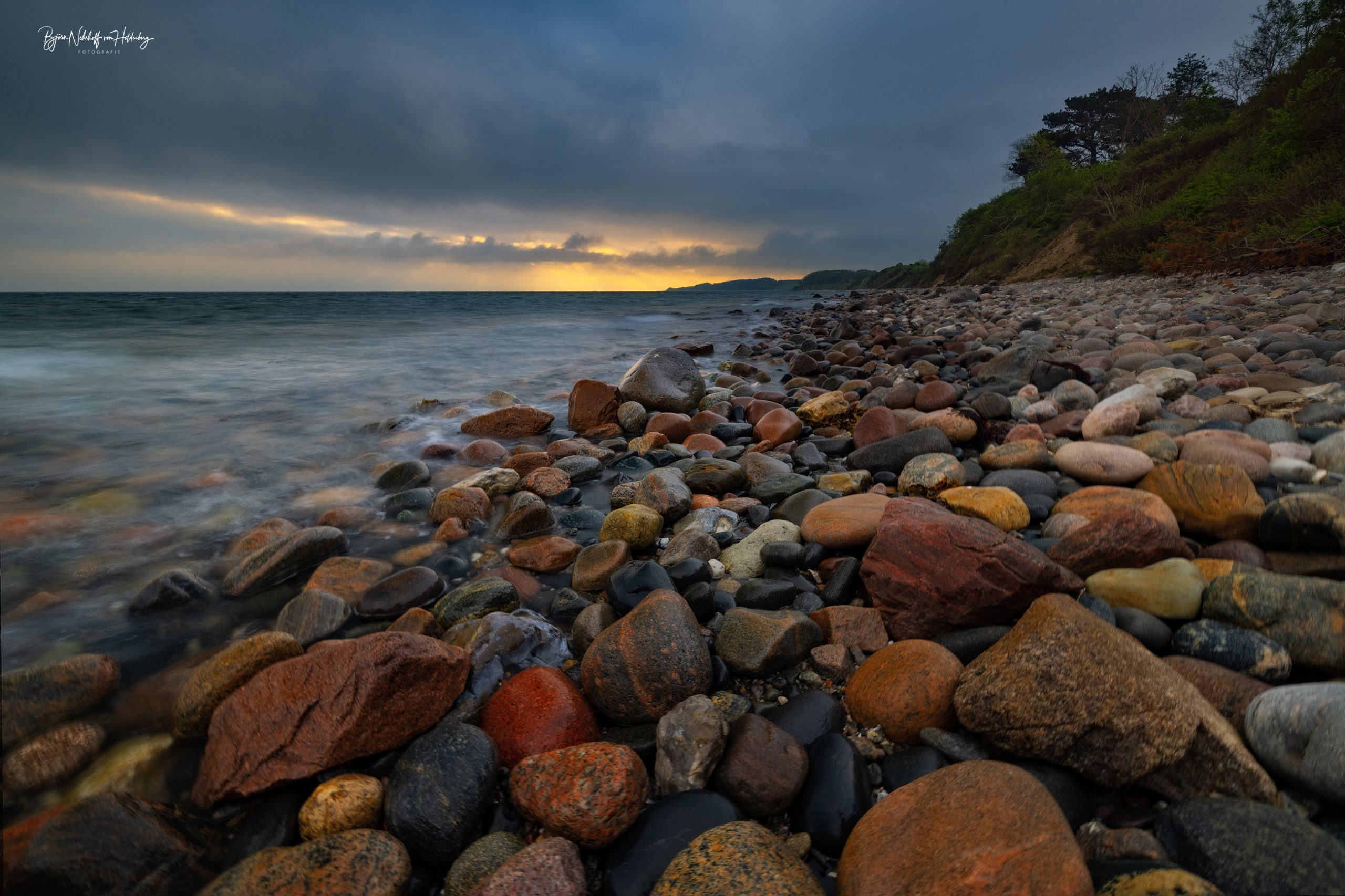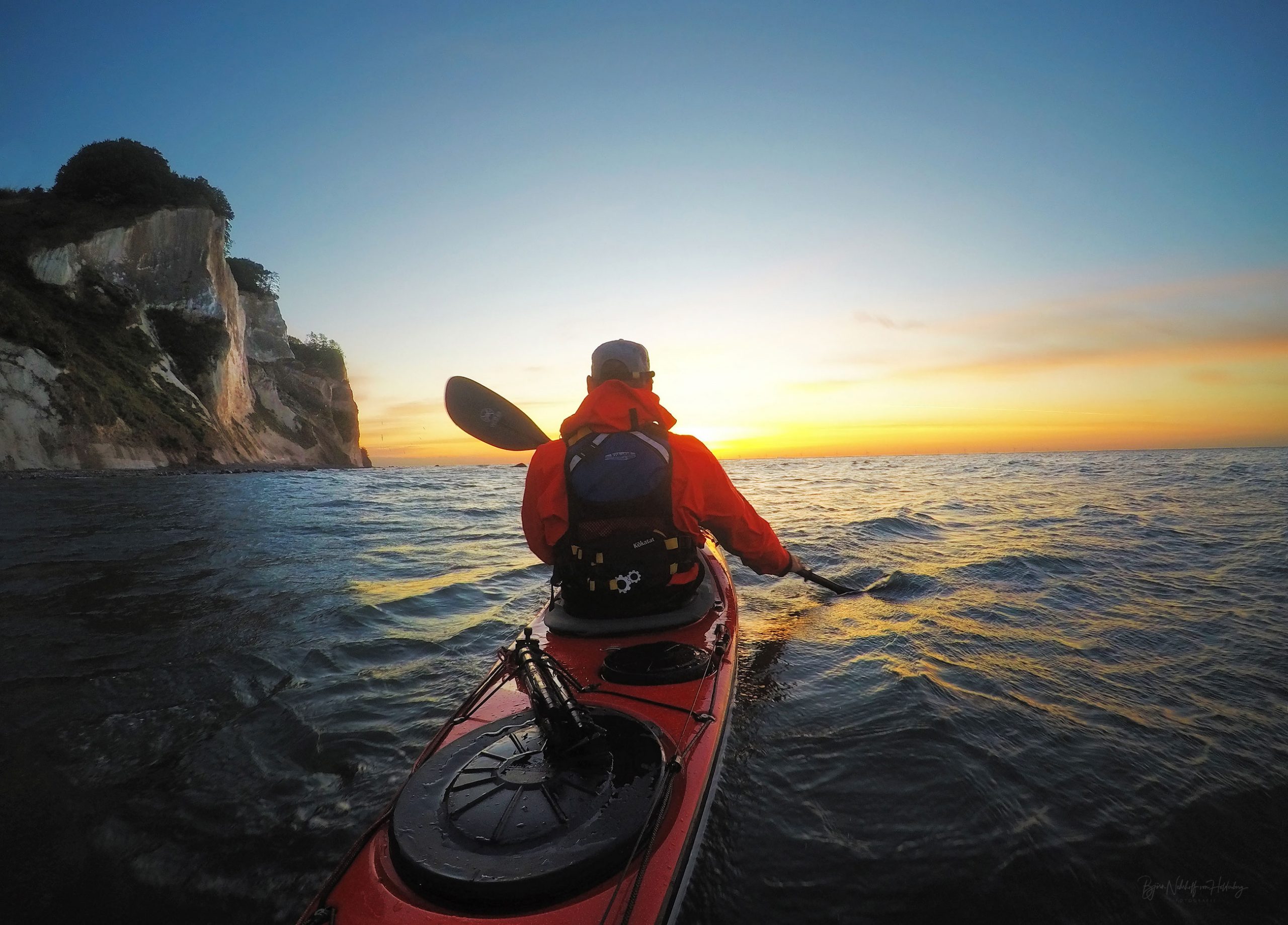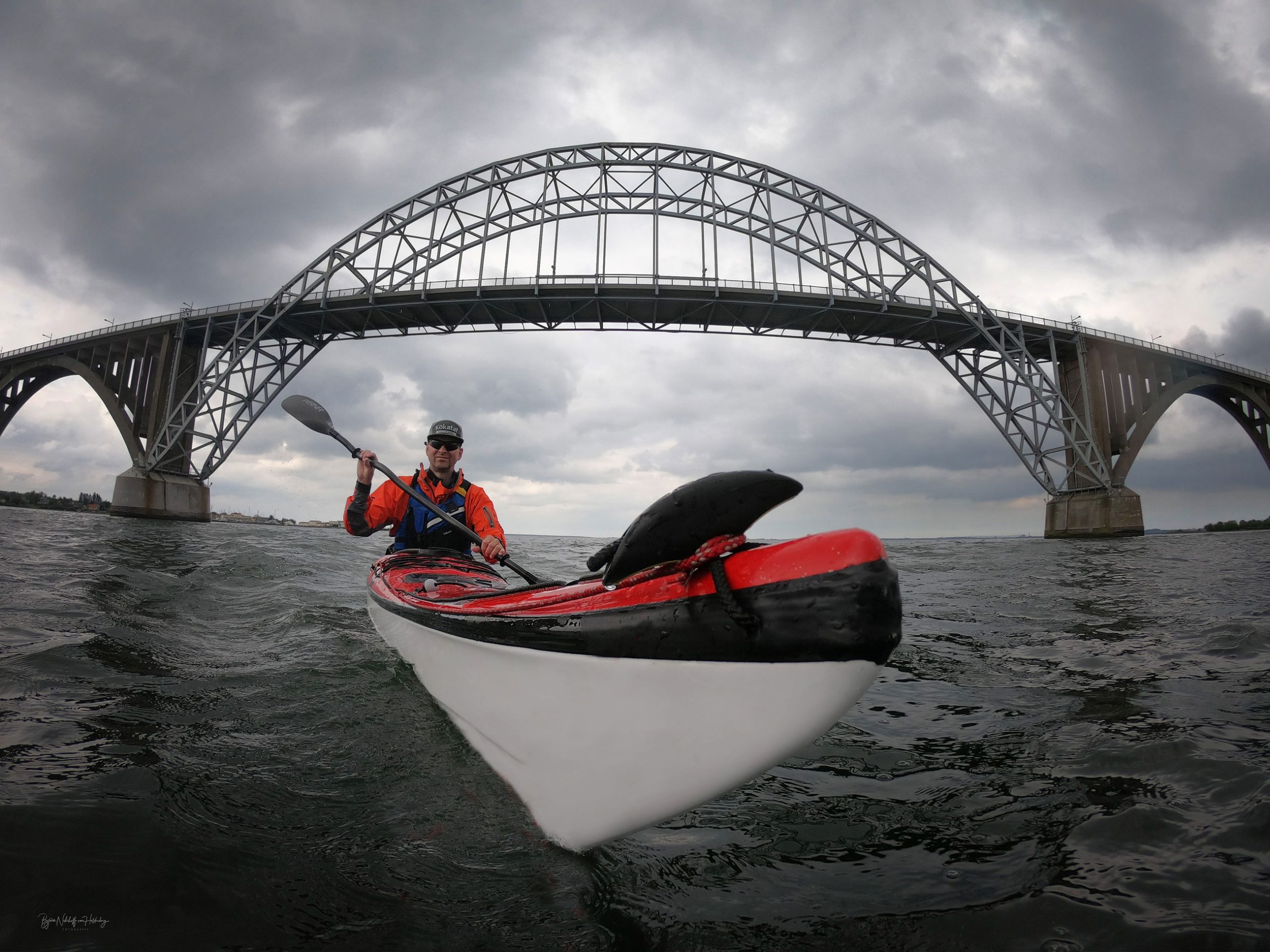Many say the island called Møn in the eastern part of the Danish Baltic Sea is the most beautiful island with the most spectacular section of coastline in the whole of the little Kingdom. This means a lot because the country is supposed to own 1,400 islands and a coastline of more than 7000 km in length. I could quite agree with that, but I have not even seen yet maybe 150 of their islets.
What makes it stand out from the others are its chalk cliffs. The white walls called Møns Klint stretch for about 7 km along the eastern coast of Møn. They consist of shells that accumulated 70 million years ago on the seabed of an ancient tropic sea. Billions of microscopic plankton with chalk skeletons made up a thick layer of sediment, that was later exposed by the glaciers of the ice age. If you are lucky enough you can find fossils of shellfish or sea urchins at the foot of the cliffs.
The highest point, the Dronningestolen, reaches 128 m above the sea level of the Baltic Sea. This kind of rock is also common on both sides of the English Channel like in famous places like Étretat in France, or the White Cliffs of Dover. A wonderful old beech forest that grows alongside the cliff sets the Danish wall apart.
The best time to paddle along this coast is the early morning when the sunrise hits the white, carbonate rock. If the weather is right you will paddle under the glowing “Klint” and look up in awe and wonder as there are plenty of cracks, little towers, and fallen trees along the shore to see.
But the Island has more to offer than the Klint. When you paddle around it, which means about a 110-kilometre distance and approximately 3 days of paddling, you will encounter long and empty sandy beaches and the cute little town of Steege with its historic centre.
The western shores of Møn are pretty sheltered by a lot of small islands, some only inhabited by cows and birds. On the narrow points, you will encounter a little tidal and wind-induced flow.
The main stretch of the route around the island is open to the waves of the Baltic Sea which can be pretty powerful when the wind stirs up over 5 Beaufort. A wonderful thing is the Danish system of free overnight places in the wild, called “Overnantinig i det fri”. Those are designated sites specially reserved for hikers, bikers, or paddlers. Along the shore of Møn you will find some of them in tactical, well-suited positions for a circumnavigation if combined with one of the normal camping sites. Some “Overnantinig i det fri” sites offer Scandinavian-type open wooden shelters and fireplaces, which are perfect for sitting out bad weather.
If you bring your fishing gear alongside and buy a cheap Danish fishing license in a post office, you can catch some sea trout and mackerel to enrich your cooking. So why not visit the little kingdom of Denmark and bring your sea kayak?
There is much more to discover. You can paddle alongside Copenhagen’s City or surf the waves of the North Sea in Klittmöller or Hvide Sande. Looking for a mellow camping trip? Paddle the Limfjord which offers wonderful nature, many “Overnattning i det fri” places, and an intricate system of water bodies…
